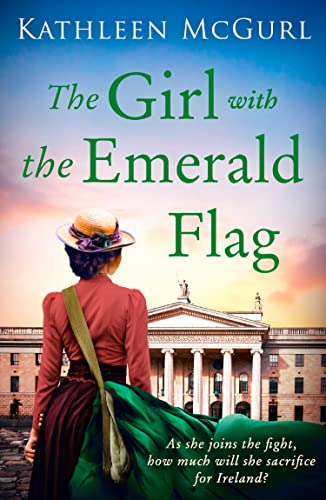The Girl with the Emerald Flag
Dublin, 1916: Gráinne’s brother Seán is serving in the British Army, whilst his friend Emmett, with whom Gráinne falls in love, is working for an independent Ireland. Gráinne joins Cumann na mBan, the women’s wing of the Irish Volunteers, and leaves her job in Clery’s store to work for Countess Markievicz, in preparation for the Rising of Easter 1916.
Her story is told in parallel with that of her great-granddaughter Nicky, a history student at Brighton University in 1998, the year of the Good Friday Agreement. Nicky is a bit of a spoiled brat, but she at least responds to her long-suffering mother’s suggestion that ‘Supergran’ might have a story to tell that would provide more than enough material for a history project; it proves to be Nicky’s redemption. Nicky has said good-bye to her principled but perhaps almost too good boyfriend and has got embroiled with the swaggering and unreliable Seb; he describes himself as an activist but all he is protesting about is the loss of his ‘freedom’ to smoke in the college bar, despite the recent hospitalisation of an asthmatic student. His self-centred ‘sit-in’ is thus contrasted with the increasingly desperate struggle inside Dublin’s GPO and its tragic aftermath.
Whilst Gráinne herself is an invention, her character works with James Connolly, Joseph Plunkett and Grace Gifford; she is a witness to Plunkett and Gifford’s marriage in Kilmainham Gaol, hours before his execution. McGurl’s history is impeccable, right down to the details of the intermittent ceasefires at St Stephen’s Green (enabling the park keepers to feed the ducks) and the business of making phone calls in the late 1990s—how quickly we have forgotten messing about with phone cards and tenpence coins.










